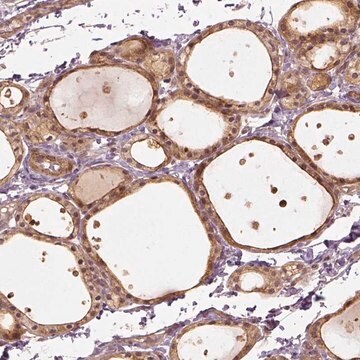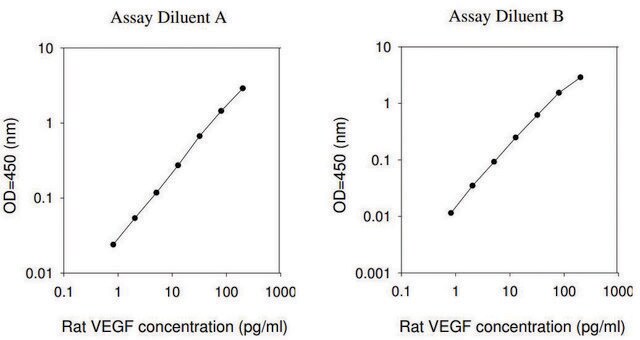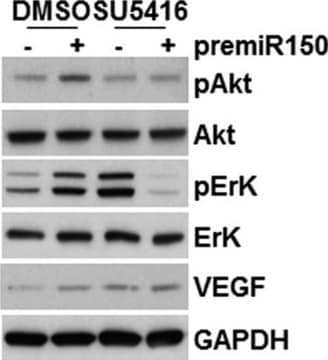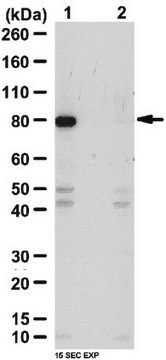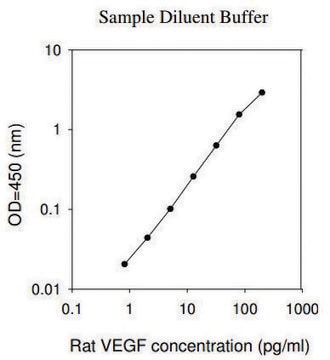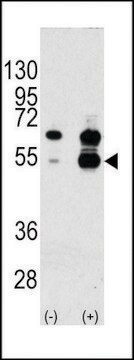07-1420
Anti-VEGF Antibody
from rabbit, purified by affinity chromatography
Synonym(s):
Vascular permeability factor
About This Item
Recommended Products
biological source
rabbit
Quality Level
antibody form
affinity purified immunoglobulin
antibody product type
primary antibodies
clone
polyclonal
purified by
affinity chromatography
species reactivity
mouse, human
technique(s)
ELISA: suitable
immunohistochemistry: suitable (paraffin)
western blot: suitable
isotype
IgG
NCBI accession no.
UniProt accession no.
shipped in
dry ice
target post-translational modification
unmodified
Gene Information
human ... VEGFA(7422)
General description
Specificity
Immunogen
Application
Neutralization: To yield one-half maximal inhibition [ND50] of the biological activity of mouse VEGF (50.0 ng/mL), a concentration of 1.0-2.0 µg/mL of a previous lot of this antibody was required.
ELISA: A concentration of at least 0.5 µg/mL (100 μL/well) is required to detect 0.2-0.4 ng/well of recombinant mouse VEGF using a previous lot of this antibody.
Optimal working dilutions must be determined by the end user.
Signaling
Growth Factors & Receptors
Quality
Western Blot Analysis:
1:500 dilution of this lot detected VEGF on 10 μg of Huvec lysates.
Target description
Linkage
Physical form
Storage and Stability
Handling Recommendations: Upon first thaw, and prior to removing the cap, centrifuge the vial and gently mix the solution. Aliquot into microcentrifuge tubes and store at -20°C. Avoid repeated freeze/thaw cycles, which may damage IgG and affect product performance.
Analysis Note
Huvec cell lysate
Disclaimer
Not finding the right product?
Try our Product Selector Tool.
Storage Class Code
13 - Non Combustible Solids
WGK
WGK 3
Flash Point(F)
Not applicable
Flash Point(C)
Not applicable
Certificates of Analysis (COA)
Search for Certificates of Analysis (COA) by entering the products Lot/Batch Number. Lot and Batch Numbers can be found on a product’s label following the words ‘Lot’ or ‘Batch’.
Already Own This Product?
Find documentation for the products that you have recently purchased in the Document Library.
Customers Also Viewed
Our team of scientists has experience in all areas of research including Life Science, Material Science, Chemical Synthesis, Chromatography, Analytical and many others.
Contact Technical Service

